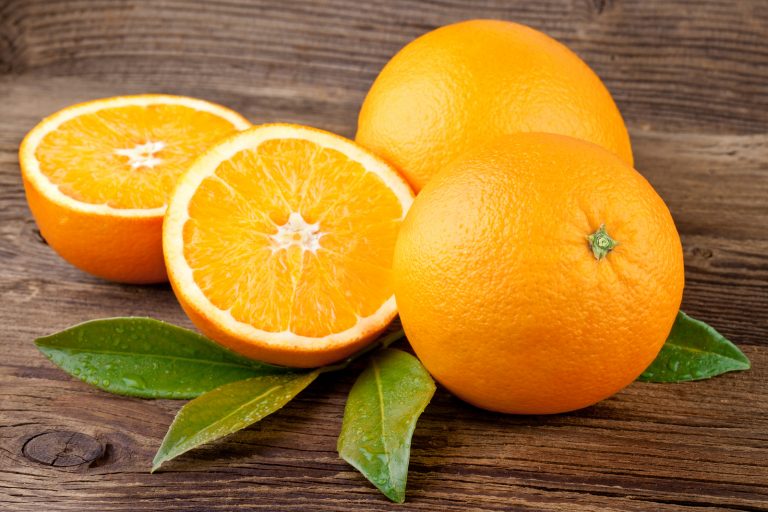In Arizona, where residents can enjoy 193 days of sunshine annually – or almost 50 more than the nearest competitor, California – sun-ripened oranges are a prime crop!

The best area for oranges in Arizona is the desert southwest. In this terrain, part of the Sonoran Desert, the all-season warmth and sunlight of Yuma, Mohave, Maricopa, and Pinal counties produce commercial oranges and other citrus of such sweetness and flavor that the area is getting a reputation as a serious contender to California.
Yuma County, in particular, offers an ideal climate for oranges. According to United States weather statistics, Yuma, Arizona tops the list of locations in the U.S. with the most sun. Those lucky enough to live there can rely on the fact that each day will deliver at least 90 percent of potential sunlight. In fact, with an average of 4,300 sunny hours annually, Yuma holds the world’s record for the greatest amount of sunshine per year!
Clouds, when they do occur, come in July, August, and September – the ideal months to temper summer highs. Even in December, the sun still puts in an appearance more than 8 out of 10 daylight hours.
This is the kind of climate oranges love! No wonder Yuma County is now the largest citrus growing region in the state, adding to the state’s reputation as the fourth largest producer of oranges (and grapefruit) in the nation. Arizona is also one of only two states to grow 95 percent of America’s lemons! (California is the other).
The first citrus were brought to Arizona in the wake of the Hohokam Canals/Salt River Project. In 1889, William Murphy planted an experimental citrus grove. The fruits commanded premium prices from the Civil War soldiers and California Gold Rush miners who remained in the area. At that time, ascorbic acid – the major component of citrus fruits – was the only known preventative for scurvy, a weakening disease that caused tooth loss and bleeding from the skin.
Not only are Arizona oranges delicious, but they:
- Are grown on trees called “evergreen”; trees that don’t lose their leaves in winter
- Can be left on the tree and won’t over-ripen
- Will not continue to ripen once picked, which is why nothing tastes as good as an orange picked and delivered locally
- Originated in the Orient, namely southern China and northern India, and migrated to the U.S. via Spain to South America, and Mexico, in the early 1700s
- Are said to help dissolve kidney stones and promote a healthy liver
- Deliver a flavor that is the world’s third favorite, after chocolate and vanilla
- Are not grown from seeds, but from bud grafts on 12 types of rootstocks selected for local conditions
- Are hybrids crossbred from a Pomelo and a Mandarin orange, and now come in more than 600 varieties around the world
- Produce 10 segments inside each fruit, and sweet-smelling blossoms that are a major component of many perfumes
- Have a pungent peel that can be used in the garden to deter slugs and some other pests
- Are good at fighting against skin damage caused by sun and pollution, can help lower cholesterol thanks to their fiber content, and provide both potassium and choline to maintain healthy hearts
For all their benefits, 85 percent of oranges still end up in orange juice, or OJ. This juice is not always 100 percent OJ, or freshly squeezed, no matter what the label says. Commercially manufactured OJ can be so highly processed that makers add orange flavoring to restore the taste consumers have come to expect.
The next time you reach for that waxed container of “fresh” OJ, think instead of buying a dozen oranges and squeezing your own. You will be doing yourself, and your family, a big favor. If you don’t protect the hearts of those you love, who will?
Related articles
- In Time for National Oranges and Lemons Day (fillyourplate.org)
- 30 Ways to Use Oranges (fillyourplate.org)
- 15 Fun Facts about Food (fillyourplate.org)

